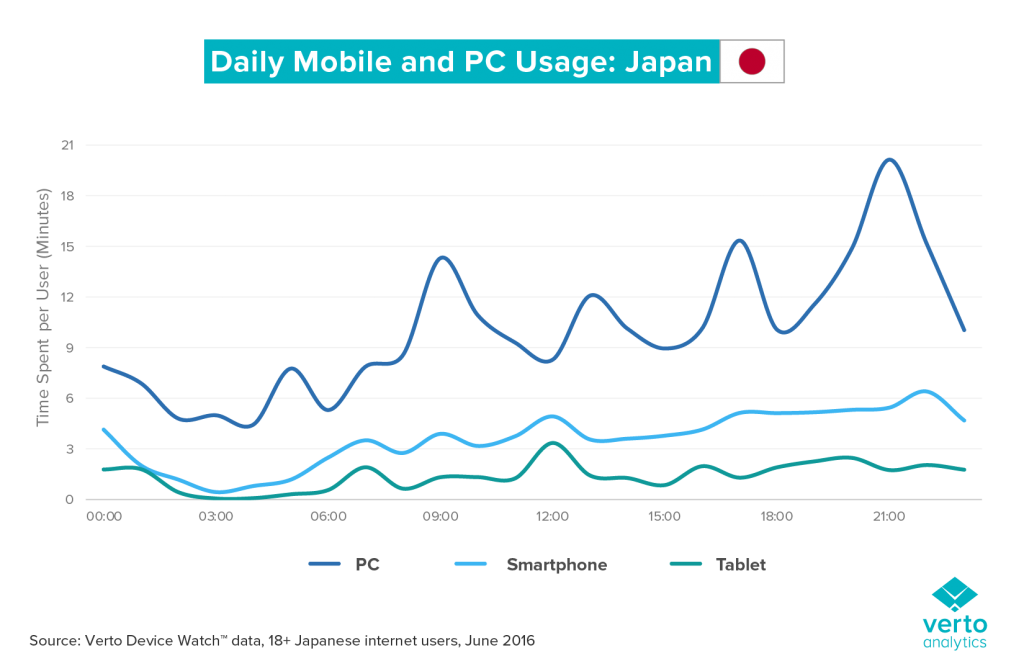A well-tuned combination of data is the foundation of a successful global brand, writes Hannu Verkasalo, chief executive of Verto Analytics.
Today, many new companies are born digital – and the most successful ones are “born global” as well. Ultimately, your ability to establish a strong foothold in any market and create a foundation for organic growth will be dictated by your mastery of quantitative and behavioral data about local and international markets, as well as your ability to leverage that information across your entire organization.
Lessons from Japan
As founder and CEO of Verto Analytics, which provides the most comprehensive data available about the size, demographics, and behaviours of digital consumers, I had the opportunity to speak about some of these issues alongside representatives from Unilever Japan and New Balance Japan at ad:tech Tokyo.
While our discussion centered on marketing hurdles specific to the Japanese market, here are three takeaways any worldwide marketer can use.
1 – Blend global assets with local intelligence
Marketers are charged with building global assets, including establishing brand awareness on a global scale. Ironically, however, a global marketing strategy requires an in-depth understanding of local market dynamics and tactics; the key to success requires balancing and blending global brand awareness with local perspective.
For example, luxury car companies like BMW and Mercedes brand their products in China as status symbols, while in their home market in Germany, the brand focus is about reliability, innovation, and quality. As a marketer, local market characteristics or consumer profiles must be taken into account when establishing and communicating your brand and values; highlight aspects of the brand that will resonate locally while remaining aligned with your global message.
2 – Assess your market opportunities on a global scale
Digital companies create products that are highly mobile and easily transcend geographic boundaries. When launching a new brand, you must consider global opportunities to create revenue.
Today’s universal technological infrastructures (such as mobile operating systems and APIs) provides an unprecedented opportunity to spread your product to new markets – sometimes overnight (think of the rapid expansion of Pokémon GO). In fact, several brands, like Rovio’s Angry Birds (Finland) or King’s Candy Crush Saga (Sweden) have succeeded by looking beyond their small home markets and leveraging global opportunities.
3 – Use data to understand the size, structure, and behaviour of the local market
In Tokyo, I spoke about the failures of specific Japanese exports (for example NTT DoCoMo’s iMode), as well as the notable successes (Nintendo). Before launching to a new local audience, marketers must understand the local audience size and structure and local audience behaviours.
iMode’s failure to expand globally may be partly attributed to the fact that it attempted to export a Japanese business and brand to European markets, without sufficient consideration of local market structures or behaviours. Consumer behaviour can reveal important, local market distinctions; for example, Japanese mobile usage has clear peaks during commuting hours, while a similar pattern is not seen in the US.
Brands must configure their local programmatic platforms accordingly to be in the right spot at the right time to reach the right audience. Having local data and optimization included across the board – from media planning to audience engagement tactics, or market sizing to localization of service – will help you succeed on a global scale.
One Size Does Not Fit All
A well-tuned combination of data – local and international, quantitative and behavioural – is the foundation of a successful global brand. Integrating this data (and the local market insights you derive from it) into your comprehensive marketing strategy will produce help you produce cohesive local campaigns, conduct better R&D, make better portfolio management choices, and keep an eye on new local competitors in different markets locally and globally.









